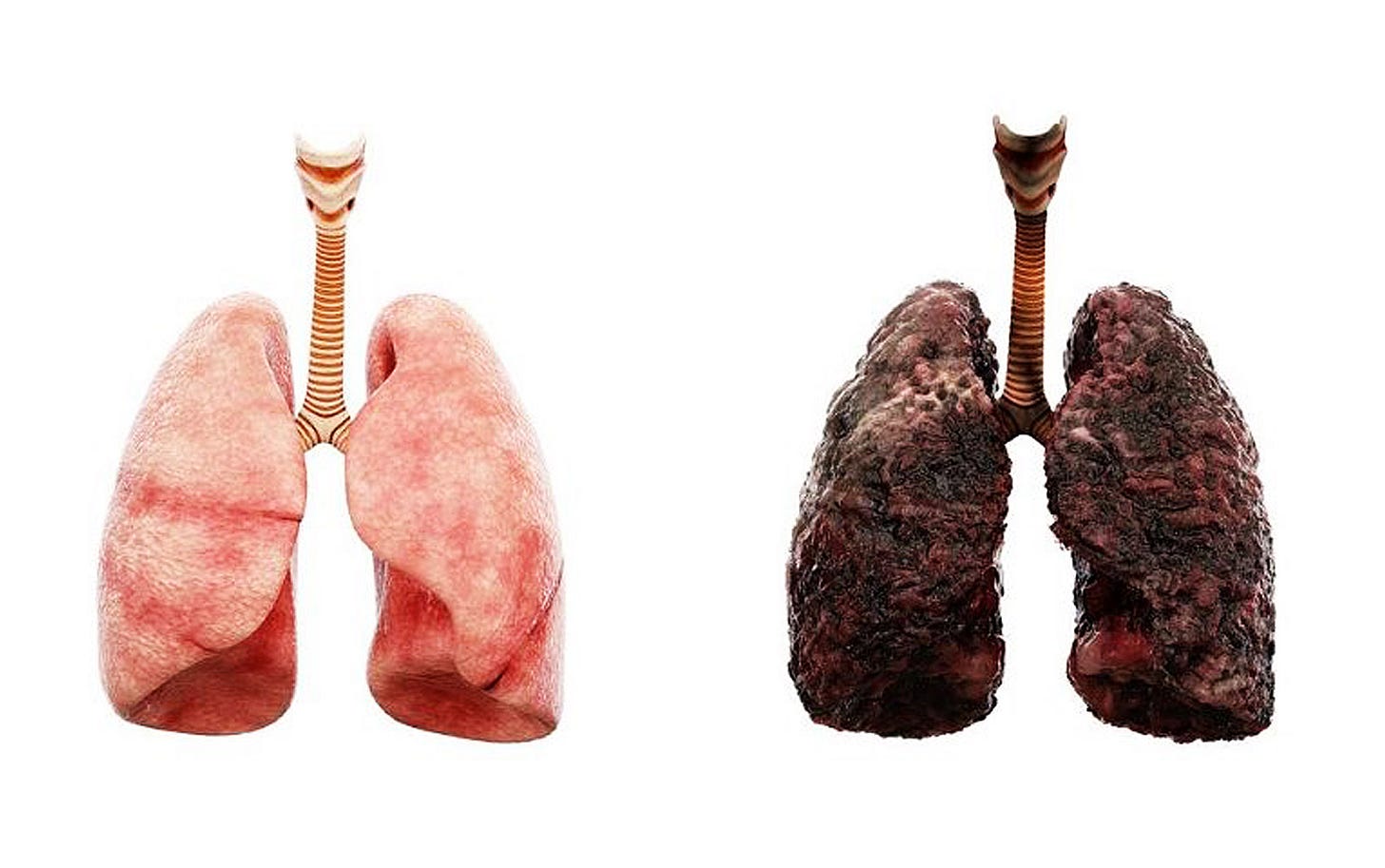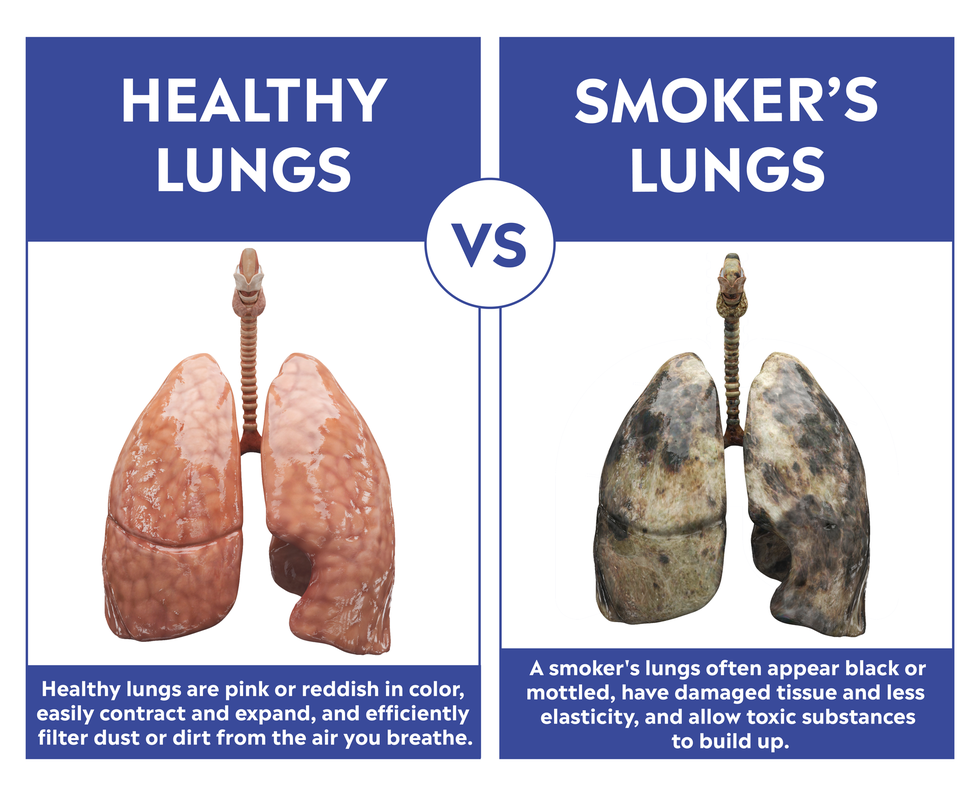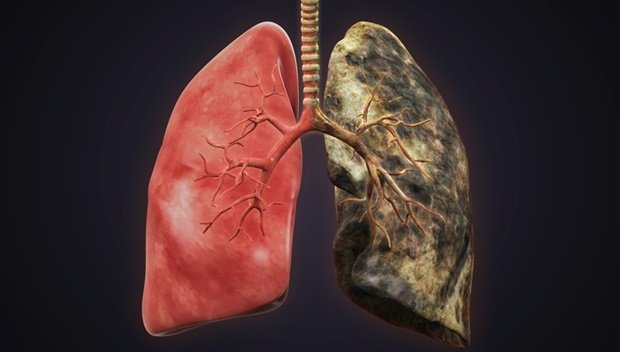Every time you take a puff of a cigarette, it leaves behind more than just smoke in the air. It deposits a sticky substance called tar in your lungs, which silently damages your ability to breathe freely. While most of us have seen awareness campaigns showing the dangers of smoking, the actual damage caused by tar residue is often hidden from plain sight.
Smoking is one of the leading causes of severe health conditions such as lung cancer, emphysema, and chronic obstructive pulmonary disease (COPD). For long-term smokers, Removing Tar Residue After Smoking becomes a crucial step in reclaiming lung health and preventing irreversible damage.

[Source: Re-Think India]
What is Tar Residue?
Tar residue is a thick, sticky brown or black substance produced when tobacco burns. Unlike nicotine, which exits the body within days, tar stubbornly accumulates in the lungs over years, coating airways and lung tissue.
Here’s what makes tar so harmful:
-
Chemical Overload: Tar contains over 7,000 chemicals, including arsenic, formaldehyde, and benzene — many are carcinogens directly linked to cancer.
-
Clogged Airways: It sticks to the bronchial tubes and alveoli, narrowing passages and making breathing more difficult.
-
Scarring & Stiffness: Tar damages delicate lung tissues, reducing their elasticity and oxygen exchange capacity.
-
Visible Damage: Just like tar stains walls, curtains, and teeth, it permanently stains and scars lung tissue.
Understanding tar is the first step. Once you know what it does, you’ll see why Removing Tar Residue After Smoking is essential for healing your lungs and restoring lung health.
Differences Between a Smoker’s Lungs and a Non-Smoker’s Lungs
Tar residue changes the structure and function of lungs dramatically. Comparing a chronic smoker’s lungs with a healthy person’s lungs makes the contrast crystal clear:
1. Color and Texture
-
Healthy lungs look soft, pink, and sponge-like, indicating oxygen-rich tissues.
- Smoker’s lungs turn grey or black from tar deposits, losing softness and becoming leathery over time. (source)
2. Alveolar Damage
-
The alveoli (tiny sacs for oxygen exchange) in healthy lungs are clear and functional.
-
In smokers, tar clogs and scars alveoli, reducing oxygen absorption and causing breathlessness. (source)
3. Excess Mucus and Cough
-
Tar irritates airways, forcing the lungs to produce excess mucus.
-
This results in the infamous “smoker’s cough,” wheezing, and recurring respiratory infections. (source)
4. Loss of Lung Function
-
Smokers gradually lose lung capacity as tar scars tissues and blocks airways.
-
Even light physical activities may leave them gasping for breath. (source)
5. Higher Risk of Disease
-
Tar-damaged lungs are more prone to lung cancer, COPD, bronchitis, and pneumonia.
-
The immune system weakens, leaving the respiratory system vulnerable.
This comparison shows why Removing Tar Residue After Smoking isn’t just about cleaner lungs — it’s about protecting your life. (source)

[Source: Prevention]
How a Chronic Smoker's Lung Is Different from a Normal Lung?
Why is Tar Residue Harmful?
Tar isn’t just a sticky byproduct of smoking — it’s a toxic cocktail of thousands of chemicals that quietly destroy your respiratory system. Each puff of smoke deposits more of this residue into your lungs, and over time, it accumulates like layers of glue. The result? Blocked airways, reduced lung capacity, chronic inflammation, and long-term diseases that may be irreversible.
Let’s break down why tar is so dangerous and why Removing Tar Residue After Smoking should be a top health priority:
1. Carcinogenic Compounds
Tar contains over 7,000 chemicals, out of which at least 70 are proven carcinogens.
-
Substances like benzene, arsenic, cadmium, and formaldehyde directly damage DNA, triggering abnormal cell growth that leads to cancer.
-
These compounds don’t just increase the risk of lung cancer, but also throat, bladder, and esophageal cancers.
-
Over years of smoking, the continuous exposure to these carcinogens multiplies cancer risk exponentially, even if you cut down to "light" cigarettes.
2. Respiratory Blockage
When tar sticks to the walls of your lungs, it behaves like concrete in your airways.
-
It narrows bronchial tubes, limiting airflow and making each breath feel heavier.
-
The sticky layer traps mucus and dust, which would otherwise be cleared by your lungs.
-
Over time, this buildup causes chronic wheezing, shortness of breath, and difficulty even with mild physical activity.
3. Immune Weakening
Your lungs are equipped with cilia — tiny, hair-like structures that sweep out toxins and mucus.
-
Tar paralyzes and destroys cilia, leaving your lungs defenseless.
-
Without functioning cilia, toxins stay trapped, infections spread more easily, and natural cleansing becomes nearly impossible.
-
This is why smokers often suffer from recurring colds, infections, and a slower healing process even after quitting.
4. Chronic Illness Development
Tar buildup doesn’t just cause irritation — it leads to lifelong respiratory diseases.
-
Emphysema: Air sacs in the lungs rupture, reducing oxygen absorption.
-
Chronic Bronchitis: Airways remain inflamed and clogged with mucus, causing persistent cough.
-
COPD (Chronic Obstructive Pulmonary Disease): A progressive, incurable disease where lungs slowly lose function.
-
Lung Cancer: Long-term tar exposure mutates cells, making malignant tumors more likely.
5. Systemic Health Impact
The dangers of tar don’t stop at the lungs — they spread throughout your body.
-
Tar particles can enter the bloodstream, damaging blood vessels and increasing the risk of heart disease and stroke.
-
It reduces oxygen delivery to your organs, causing fatigue and reduced stamina.
-
Family members exposed to secondhand smoke also inhale tar, putting their health at risk too.
Ignoring tar means overlooking the root cause of smoking-related diseases. Understanding its destructive role makes it clear why Removing Tar Residue After Smoking is not just helpful, but absolutely essential for protecting your long-term health.
When Does Tar Start Forming in the Lungs?
Tar doesn’t wait — it begins forming in your lungs from the very first cigarette you smoke. Every puff deposits sticky, harmful particles along the delicate lining of your respiratory tract, setting off a slow but steady chain of damage. While the body has some natural defense mechanisms to clear toxins, these are often overwhelmed with repeated exposure, causing tar to accumulate faster than it can be removed.

[Source: Behavioral Health Solutions of South Texas]
Understanding when and how tar builds up can help you realize why Removing Tar Residue After Smoking is crucial, even if you’re just starting your quitting journey. Let’s break it down by stages:
1. Early Stage (Weeks to Months)
Even after just a few cigarettes, tar begins coating the lungs and airway passages.
-
The body tries to repair and clear damage, using cilia to sweep out mucus and some tar particles.
-
Mild irritation occurs in the bronchial tubes, often causing a temporary cough or phlegm production.
-
At this stage, the damage is partially reversible, making it the ideal time to focus on detox strategies and Removing Tar Residue After Smoking.
2. Moderate Stage (Years of Smoking)
With consistent smoking over several years, tar begins to stick more persistently and scar lung tissue.
-
Alveoli, the tiny air sacs responsible for oxygen exchange, become clogged and less efficient.
-
Bronchial tubes thicken and inflammation becomes chronic, leading to smoker’s cough, wheezing, and reduced stamina.
-
The lungs’ natural ability to heal diminishes, making interventions like lung detox, hydration, and antioxidant-rich diets critical for Removing Tar Residue After Smoking.
3. Long-Term Stage (Decades of Smoking)
After decades of smoking, tar accumulation can become irreversible.
-
Lung tissues darken, elasticity is lost, and the risk of chronic diseases like COPD, emphysema, and lung cancer skyrockets.
-
Even quitting at this stage cannot fully restore lung function, though it can slow further damage and improve overall quality of life.
-
At this point, using advanced lung-supporting remedies, deep breathing exercises, and supplements designed to aid detoxification become essential steps in Removing Tar Residue After Smoking.
The timeline shows that tar begins harming your lungs immediately and progressively worsens over time. The earlier you act with proper habits and lung-supporting strategies, the more effective Removing Tar Residue After Smoking becomes in restoring lung health and preventing permanent damage.
Know more about how smoking affects your health.
How Long Does it Take for Lungs to Heal?
The moment you take the decision to quit smoking, your lungs begin an incredible healing process. While some improvements occur quickly, fully removing tar and restoring optimal lung function is a gradual journey that depends on your lifestyle, diet, exercise, and other lung-supporting habits. Understanding the timeline helps set realistic expectations and emphasizes why Removing Tar Residue After Smoking is a critical long-term goal.

Within 48 Hours: Cilia Begin to Regenerate
Cilia are tiny, hair-like structures lining your airways that sweep out mucus, toxins, and tar particles.
-
Within just two days of quitting, damaged cilia start regenerating, improving your lungs’ natural cleaning system.
-
This regeneration helps begin the slow removal of tar residue, preventing further accumulation.
-
Early recovery also reduces your risk of infections, as your lungs regain some defensive capabilities. (source)
After 3 Months: Lung Capacity Starts Improving
Around three months after quitting, lung function sees measurable improvement.
-
Airways become less inflamed, allowing smoother airflow and deeper breaths.
-
Mucus production decreases, reducing coughing, congestion, and wheezing.
-
During this stage, removing tar residue after smoking becomes more effective, as healthy lung tissue can now expel toxins more efficiently. (source)
Between 9 Months and 1 Year: Coughing and Elasticity Improve
By nine months to one year, your lungs undergo noticeable changes.
-
Chronic coughing diminishes significantly, and phlegm accumulation reduces.
-
Elasticity of lung tissues improves, allowing the lungs to expand and contract more efficiently.
-
Symptoms like breathlessness during light activity start to fade, showing the benefits of consistent detox methods and lifestyle adjustments. (source)
Between 1–5 Years: Risk of Disease Drops Dramatically
Long-term lung health sees significant gains over one to five years of abstinence.
-
The risk of infections, chronic bronchitis, and diseases like COPD decreases considerably.
-
Even though some tar residue may remain, the body continues to adapt, and healthy lung tissue becomes more dominant.
-
Combining detox strategies, such as deep breathing exercises, antioxidant-rich diets, and supplements, accelerates the process of Removing Tar Residue After Smoking and maintaining lung health. (source)
While complete elimination of tar can take several years, consistent dedication to lung-friendly habits makes a significant difference. The timeline shows that the earlier you quit and actively support your lungs, the faster and more effectively you can remove tar residue and restore healthy lung function.
How to Remove Tar Residue from Lungs After Smoking
Removing tar residue from your lungs isn’t something that happens overnight. It requires a combination of healthy habits, consistent detox practices, and lifestyle changes that cleanse, repair, and protect your respiratory system. By adopting these steps, you can support your body in naturally eliminating tar, reducing inflammation, and improving lung function. Here are the most effective strategies:
1. Brush Your Teeth & Tongue
Maintaining oral hygiene is more than just fresh breath—it plays a critical role in removing tar residue after smoking.
-
Tar particles and chemicals can accumulate in your mouth and throat, contributing to bacterial growth and oral toxins.
-
Brushing your teeth and tongue after smoking helps prevent these substances from being reabsorbed into your body.
-
Consistent oral care reduces the risk of gum disease, bad breath, and the circulation of tar-related toxins.
2. Tongue Scraping
Tongue scraping complements brushing by targeting the tongue’s surface, where tar and chemical residue tend to linger.
-
Scraping removes debris, bacteria, and sticky chemicals that brushing alone may miss.
-
This practice not only improves breath but also reduces the chances of oral infections.
-
Regular tongue cleaning supports the overall process of eliminating tar residue after smoking, enhancing your body’s natural detox pathways.
3. Stay Hydrated
Hydration is a simple yet powerful way to aid lung detox. Drinking plenty of water helps flush toxins and tar particles from your body.
-
Water thins mucus, making it easier for the lungs to expel trapped tar.
-
Herbal teas like peppermint, thyme, and licorice root add soothing benefits while supporting respiratory cleansing.
-
Staying well-hydrated enhances overall lung health and speeds up the process of removing tar residue after smoking.
4. Exercise Regularly
Physical activity is crucial for strengthening your lungs and accelerating tar removal.
-
Cardio exercises, such as running, swimming, or brisk walking, increase oxygen intake and circulation.
-
Exercise forces your lungs to work harder, helping expel trapped air, mucus, and tar buildup.
-
Over time, this improves lung capacity, stamina, and overall respiratory efficiency.
5. Steam Inhalation
Steam therapy is an effective natural method to loosen sticky tar and open up airways.
-
Inhaling warm steam moisturizes the respiratory tract and helps clear mucus clogged with tar.
-
Adding herbs like eucalyptus or peppermint enhances detoxification and provides anti-inflammatory benefits.
-
Regular steam inhalation supports your lungs in removing tar residue after smoking, making breathing easier and reducing irritation.
6. Eat Antioxidant-Rich Foods
A diet rich in antioxidants is vital for healing damaged lung tissue and reducing inflammation caused by tar.
-
Fruits like berries, oranges, and apples, along with leafy greens, combat oxidative stress.
-
Turmeric and ginger help neutralize free radicals and promote detoxification of the lungs.
-
Antioxidants support the body’s natural ability to eliminate tar residue after smoking, improving lung health over time.
7. Avoid Smoking Indoors
Smoking indoors increases exposure to tar particles, which can coat walls, furniture, and fabrics.
-
These particles may re-enter your lungs when inhaled secondhand.
-
By smoking outdoors and keeping your living spaces clean, you reduce continuous tar exposure and protect lung function.
8. Clean Surroundings Regularly
Tar particles can cling to clothes, bedding, and surfaces, prolonging exposure.
-
Washing clothes and bedding, and cleaning walls and furniture, removes these harmful residues.
-
Maintaining a clean environment helps reduce reinhalation of tar and supports the ongoing process of removing tar residue after smoking.
By consistently implementing these steps—hydration, exercise, diet, oral care, and environmental cleanliness—you create a strong foundation for naturally and effectively removing tar residue after smoking, allowing your lungs to recover and breathe more freely.
Natural Ways to Quit Smoking
Quitting smoking is the single most effective step toward preventing additional tar buildup in your lungs. While quitting can feel challenging, adopting natural strategies makes the process more manageable and sustainable. These methods not only reduce nicotine cravings but also accelerate Removing Tar Residue After Smoking, supporting your lungs in regaining health over time. Let’s explore the most effective natural approaches:
1. Gradual Reduction
Instead of quitting abruptly, slowly tapering down your cigarette intake can make the process smoother.
-
Start by reducing the number of cigarettes you smoke daily, gradually increasing smoke-free intervals.
-
Gradual reduction helps minimize withdrawal symptoms like irritability, headaches, and cravings.
-
This method also gives your lungs a head start in detoxifying tar residue, as exposure decreases over time. (source)
2. Exercise Regularly
Physical activity is a powerful tool against cravings and stress caused by nicotine withdrawal.
-
Aerobic exercises like running, swimming, or brisk walking increase lung capacity and oxygen intake.
-
Exercise releases endorphins, improving mood and reducing the urge to smoke.
-
Regular activity enhances lung function, which in turn helps the body naturally eliminate tar residue after smoking. (source)
3. Herbal Remedies
Certain herbs can support your quit-smoking journey by reducing cravings and easing withdrawal symptoms.
-
Lobelia is known to mimic nicotine in small doses, helping to reduce dependence.
-
Peppermint, ginger, and clove can ease throat irritation and promote detoxification.
-
Green tea, rich in antioxidants, also supports tar removal, helping the lungs heal from prolonged exposure. (source)
4. Mindfulness and Meditation
Stress is a common trigger for smoking, making mindfulness practices essential.
-
Yoga, deep breathing exercises, and meditation calm the mind and reduce anxiety.
-
Mindfulness helps you become aware of triggers, preventing relapse and promoting long-term smoking cessation.
-
By lowering stress-induced smoking, these practices accelerate the process of removing tar residue from the lungs. (source)
5. Balanced Diet
A nutrient-rich diet can significantly support lung recovery and detoxification.
-
Foods high in antioxidants, like berries, leafy greens, and citrus fruits, combat inflammation caused by tar.
-
Lean proteins, whole grains, and healthy fats improve overall cellular repair and lung function.
-
A balanced diet enhances your body’s natural detox systems, aiding the removal of tar residue after smoking and speeding up healing. (source)
6. Stay Hydrated
Drinking plenty of water and herbal teas helps flush toxins and tar particles from your system.
-
Hydration supports mucus clearance, making it easier for lungs to remove lingering tar.
-
Herbal teas like licorice root, thyme, and peppermint can soothe the airways and reduce inflammation.
-
Staying hydrated consistently boosts the efficiency of tar residue removal, complementing other detox strategies. (source)
Incorporating these natural methods creates a holistic approach to quitting smoking. Not only do they stop future tar buildup, but they also actively support the body in removing tar residue after smoking, helping your lungs regain function, elasticity, and overall health over time.
Know more about the benefits of turmeric for lung and liver health.
How Healeo’s Lung Forte Helps in Removing Tar Residue
Healeo’s Lung Forte is a natural supplement crafted to help remove tar residue after smoking and support lung recovery. Its blend of 18 herbs and vitamins—including Marshmallow Leaf, Vasaka, Stinging Nettle, Quercetin, and Pine Bark Extract—works together to break down sticky tar deposits and flush out toxins. These ingredients also reduce airway inflammation, ease coughing and wheezing, and strengthen lung tissue. Regular use promotes clearer breathing, improved lung capacity, and long-term respiratory resilience, making Lung Forte a natural detox companion for healthier lungs after smoking.

Conclusion
Removing Tar Residue After Smoking is a gradual journey that requires patience, consistency, and dedication. It’s not an overnight process, but every small step—whether quitting smoking, staying hydrated, exercising, or eating antioxidant-rich foods—brings your lungs closer to recovery. Supporting your lungs with natural remedies and supplements like Healeo’s Lung Forte can accelerate this process by breaking down stubborn tar, reducing airway inflammation, and strengthening lung tissue.
The key takeaway is simple: the earlier you start focusing on removing tar residue after smoking, the greater the chances of preserving lung function and preventing long-term respiratory diseases. Even if you’ve smoked for years, your lungs have an incredible ability to repair themselves with the right habits, care, and support. By committing to these practices, you’re not just clearing tar—you’re reclaiming your breathing capacity, enhancing overall health, and investing in a smoke-free future.
FAQs:
1. What is the best way to quit smoking naturally?
The best way to quit smoking naturally includes a combination of gradual reduction, regular exercise, herbal remedies, mindfulness practices, a healthy diet, and staying hydrated. These methods help reduce cravings and manage withdrawal symptoms without the use of nicotine replacement products.
2. How long does it take to quit smoking naturally?
The time it takes to quit smoking naturally varies for each person. Some people may take a few weeks, while others may need several months. Gradual reduction combined with lifestyle changes, such as exercise and mindfulness, can help ease the process.
3. Can herbal remedies help with quitting smoking?
Yes, certain herbal remedies like lobelia and peppermint can help reduce nicotine cravings and manage withdrawal symptoms. However, it's essential to consult a healthcare provider before starting any herbal treatments.
4. What foods help reduce nicotine cravings?
Foods rich in antioxidants such as fruits, vegetables, and whole grains help detoxify your body from nicotine. Drinking green tea and eating ginger can also support lung health and reduce cravings.
5. How do natural supplements help in removing tar residue from the lungs?
Natural or organic supplements like Healeo’s Lung Forte help detoxify lungs along with removing prolonged tar residue from lungs to make your lungs healthy and sustained for a long time.
6. Is exercise important when quitting smoking?
Yes, exercise is crucial when quitting smoking naturally. It helps reduce cravings, alleviates stress, and improves lung function. Engaging in aerobic activities like running, walking, or swimming is highly beneficial during the quitting process.
7. What should I expect after quitting smoking naturally?
After quitting smoking, you may experience withdrawal symptoms such as irritability, cravings, and difficulty concentrating. However, these symptoms are temporary, and adopting healthy habits will support a smoother transition to being smoke-free.
8. Can coughing up mucus be a sign of lung cleansing after quitting smoking?
Yes, coughing up mucus after quitting is a natural sign of your lungs beginning to cleanse themselves. This process helps expel tar buildup and other toxins accumulated from years of smoking.
9. Are there home remedies to speed up tar removal from the lungs?
Yes, staying hydrated, drinking herbal teas (like licorice or mullein), inhaling steam, and eating anti-inflammatory foods can support your lungs in naturally clearing tar residue and improving breathing.
10. Does smoking light cigarettes reduce tar buildup in the lungs?
No, smoking light or low-tar cigarettes doesn’t significantly reduce tar buildup. Smokers often inhale deeper or smoke more to compensate, which may lead to similar or even greater tar intake.



